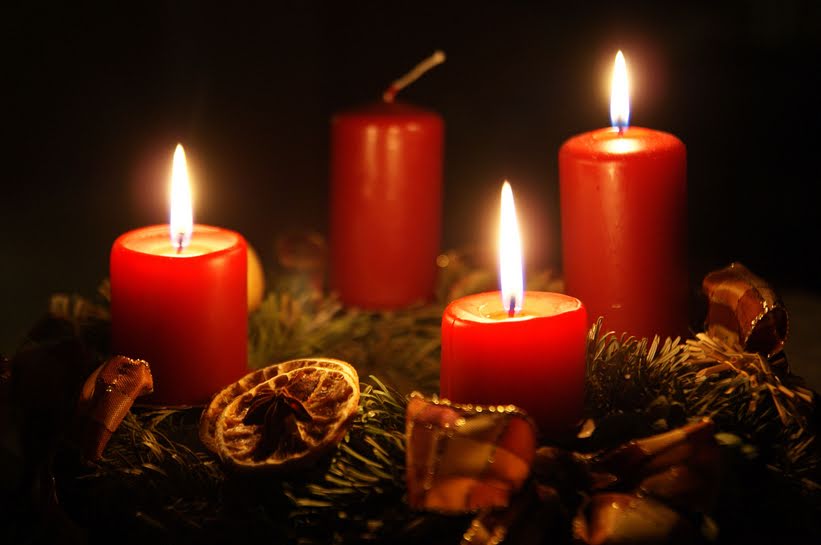Why do Christians celebrate the Advent season?
Celebrating Advent involves spending time in spiritual preparation for the coming of Jesus Christ at Christmas. In Western Christianity, the Advent season begins on the fourth Sunday before Christmas, or on the Sunday that falls closest to November 30 and lasts until Christmas Eve, or December 24.
What is Advent?
Advent is a period of spiritual preparation in which many Christians prepare for the coming or birth of the Lord, Jesus Christ. Celebrating Advent typically involves a season of prayer, fasting and repentance, followed by anticipation, hope and joy.
Many Christians celebrate Advent not only by thanking God for Christ's first coming to Earth as a child, but also for his presence among us today through the Holy Spirit and in preparation and anticipation of his final coming at the end of time.
Definition of Advent
The word "advent" derives from the Latin "adventus" which means "arrival" or "arrival", in particular of something of great importance.
Advent time
For the denominations that celebrate Advent, it marks the beginning of the year of the church.
In Western Christianity, Advent begins on the fourth Sunday before Christmas, or on the Sunday that falls closest to November 30 and lasts until Christmas Eve, or December 24. When Christmas Eve falls on Sunday, it is the last or fourth Sunday of Advent.
For Eastern Orthodox churches that use the Julian calendar, Advent begins earlier, November 15th, and lasts 40 days instead of four weeks. Advent is also known as the fast nativity scene in Orthodox Christianity.
Advent Calendar Dates
Denominations that celebrate Advent
The advent is observed mainly in Christian churches that follow an ecclesiastical calendar of the liturgical seasons to determine feasts, monuments, fasts and holy days:
Catholic
Orthodox
Anglican / Episcopalian
Lutheran
Methodist
Presbyterian
Today, however, more and more Protestant and Evangelical Christians are recognizing the spiritual significance of Advent and have begun to revive the spirit of the season through serious reflection, a joyful expectation and even through observance of some traditional Advent customs.
Origins of Advent
According to the Catholic Encyclopedia, Advent began after the fourth century as a time of preparation for Epiphany, and not in anticipation of Christmas. The Epiphany celebrates the manifestation of Christ by remembering the visit of the wise men and, in some traditions, the Baptism of Jesus. At that time the new Christians were baptized and received in the faith, and so the early church instituted a 40-day period of fasting and repentance.
Later, in the XNUMXth century, St. Gregory the Great was the first to associate this season of Advent with the coming of Christ. Originally, it was not the coming of the Christ child that was anticipated, but the Second Coming of Christ.
In the Middle Ages, the church had extended the Advent celebration to include Christ's coming through his birth in Bethlehem, his future at the end of time and his presence among us through the promised Holy Spirit. Modern Advent services include symbolic customs relating to all three of these "advocates" of Christ.
For more information on the origins of Advent, see the story of Christmas.
Advent symbols and customs
There are many variations and different interpretations of Advent customs today, depending on the denomination and type of service observed. The following symbols and customs provide only a general view and do not represent an exhaustive resource for all Christian traditions.
Some Christians choose to incorporate Advent activities into the traditions of family vacations, even when their church does not formally recognize an Advent season. They do it as a way to keep Christ at the center of their Christmas celebrations.
Advent wreath
The lighting of an Advent wreath is a custom started with Lutherans and Catholics in XNUMXth century Germany. Typically, the Advent wreath is a circle of branches or garland with four or five candles placed on the crown. During the Advent season, a candle is lit on the crown every Sunday as part of Advent services.
Follow these step-by-step instructions to create your Advent wreath.
Advent colors
Advent candles and their colors are rich in rich meaning. Each represents a specific aspect of the spiritual preparation for Christmas.
The three main colors are purple, pink and white. Purple symbolizes repentance and royalty. Pink represents joy and joy. And white is synonymous with purity and light.
Each candle also has a specific name. The first purple candle is called the Candle of Prophecy or the Candle of Hope. The second purple candle is the Bethlehem candle or the preparation candle. The third (pink) candle is the Shepherd Candle or Candle of Joy. The fourth candle, a violet, is called Angel Candle or Candle of Love. And the last (white) candle is the Candle of Christ.
Handmade Jesse tree. Image courtesy Living Sweetlee
The Jesse tree is a unique Advent tree project that can be very useful and fun to teach children the Bible at Christmas.
The Jesse tree represents the genealogical tree, or genealogy, of Jesus Christ. It can be used to tell the story of salvation, starting from creation and continuing until the coming of the Messiah.
Visit this page to learn all about Jesse Tree Advent Custom.
Alfa e Omega
In some ecclesial traditions, Alpha and Omega are symbols of Advent:
Revelation 1: 8
"I am the Alpha and the Omega," says the Lord God, "who he is, and who he was and who is to come, the Almighty." (NIV)
